Facts about the animal kingdom of Exotic
198 articles

Hummingbirds, are known by their vibrant colors and aerial acrobatics. Hummingbirds boast the fastest wing beats of any bird, a remarkable adaptation that fuels their unique flight style. Beyond their flight capabilities, hummingbirds play a crucial role in the ecosystems they inhabit. As pollinators, they facilitate...
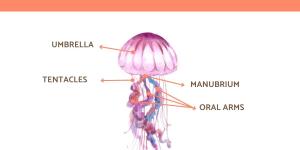
Jellyfish, sometimes called sea jellies, are fascinating gelatinous animals that drift through the oceans. With their translucent bodies and pulsating bells, they might seem like simple creatures. But beneath their seemingly delicate exterior lies a fascinating array of specialized parts that allow them...
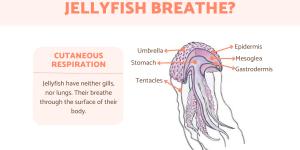
Jellyfish have a unique morphology, with a body that resembles few others in the animal kingdom. Despite this appearance, they carry out the same necessary functions and behaviors as all living things. They feed, reproduce and even respire. Respiration in jellyfish is possible thanks to their specially...
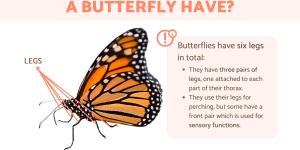
Like flies, mosquitoes or dung beetles, butterflies are insects. Unlike these other arthropods, butterflies are often seen as being separate due to their beautiful wings. We might swat a fly or squash a mosquito, but many of us will let a butterfly dance around us happily. Despite this difference in...

New Zealand is so much associated with its birdlife that the people of this country are known by the demonym of ‘Kiwis’. This is named after the kiwi, a small, flightless bird which is endemic to the island nation. With its two large northern and southern islands, as well as the many hundreds of smaller...
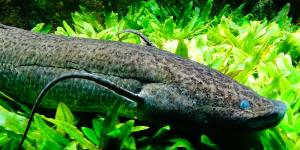
Imagine a fish that can breathe air and survive out of water! That's the incredible lungfish, a rare and ancient group that defies expectations. Found in the Southern Hemisphere's freshwater habitats, these "primitive" fish boast a unique biology that allows them to thrive in both aquatic and semiaquatic...
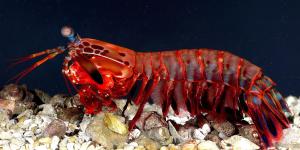
Have you ever wondered how a crab sheds its tough outer shell? This fascinating process, called molting, is essential for crustaceans like crabs, lobsters, and shrimp. It's essentially a growth strategy where the animal sheds its old, rigid outer covering to make way for a new, larger one.
This AnimalWised...
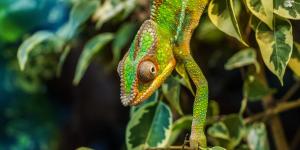
Chameleons are known for their rare adaptation which allows them to change their color. This can help them both evade predation and catch their own prey. While many know of this famed character trait, there may be a lot you do not know about chameleons. These lizards are of the order Squamata and the family...
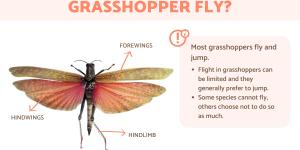
Grasshoppers are members of the order Orthoptera, the order which also contains crickets. The name of this order translates as ‘straight wings’, referencing the wing anatomy of this insect species. While their taxonomic name references flight, their common name points toward their other defining ability,...
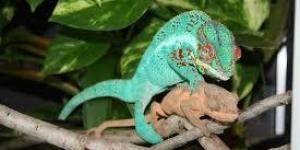
Chameleons are renowned for their mesmerizing color changes, but there's another captivating aspect to their biology: their distinct reproductive strategies. Adapted to survive in varied habitats, chameleons employ two different methods of reproduction, some lay eggs while others give birth to live young.
This...
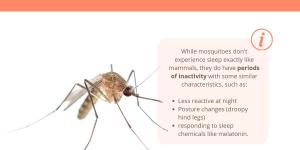
Mosquitoes are some of the most common and widespread insects on Earth. We encounter them flitting around gardens and sneaking into our homes, often associating them with sleepless nights due to their nocturnal activity. However, mosquitoes also exhibit periods of rest. Does this downtime translate to...

Ants are a family of insects known as Formicidae, themselves part of the order Hymenoptera. This order also includes bees and wasps, insects which are commonly known for their ability to sting. Ants share many similarities with other hymenopterans, including compound eyes and the presence of an ovipositor...

With their slow movements and protective shells, turtles have captivated humans for centuries. These fascinating reptiles boast a rich history, being some of the oldest living creatures on Earth. While some turtle species call the land home, others have adapted to a life in the water. One of the greatest...

A bird's plumage is one of their defining characteristics and vital to their survival in the wild. Ensuring they take care of their feathers means ensuring their health and well-being. A bird will puff up their feathers for many reasons, all related to maintaining their well-being in some way. This can...
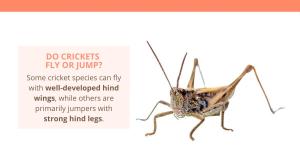
Crickets are fascinating creatures that chirp their way through fields and forests around the world. Beyond their romantic evening melodies, these insects are essential to the functioning of ecosystems. They are a vital source of food for many different animals as well as decomposers, aiding in the breakdown...

Toads can be surprising visitors in our gardens. While they gobble up pesky insects, some might find their presence unwelcome near patios, pools, or vegetable patches. The good news? There are humane and effective ways to encourage toads to explore elsewhere.
This AnimalWised guide will explore various...

The axolotl (Ambystoma mexicanum) is a unique amphibian native to Mexico. Unlike most salamanders, axolotls retain their larval features throughout their lives, sporting feathery external gills and a perpetually youthful appearance. This fascinating characteristic, known as neoteny, makes them a subject of...
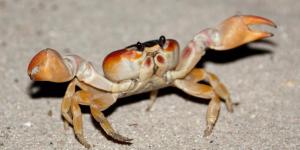
A casual glance at a crab on the beach might leave you scratching your head. Their hard shells, sideways shuffle, and grasping claws set them apart from most creatures we encounter. So, what kind of animal are they, truly? Moreover, how can creatures with such seemingly cumbersome forms thrive in environments...

Crickets are a type of insect within the order Orthoptera, a taxonomic group which also contains locusts, grasshoppers and wetas. Entomologists have differed over the classifications of these insects of the years. While it may be subject to change, crickets are currently grouped in the superfamily known...

The average lifespan of a grasshopper will depend on species, with some only living a few weeks and others up to 6 months. For the individual grasshopper, factors such as food availability and climate will influence their longevity. Grasshoppers are insects the order Orthoptera, specifically of the suborder...

Sporting unique anatomies and remarkable behaviors, crabs have conquered diverse environments from salty seas to freshwater lakes. This thriving group of crustaceans boasts an array of fascinating features, with their versatile legs playing a starring role. From powering movement and capturing prey to adapting...

Beetles reign supreme as the most diverse insect group on Earth, boasting over 350,000 identified species and likely millions more that remain undiscovered. It is no surprise that adaptability allows them to thrive in nearly every terrestrial habitat, from tropical rainforests to scorching deserts, frigid...

Whether a beetle can bite a human depends on the type of beetle. Since the order of beetles (Coleoptera) makes up around 40% of all insect species, this can seem difficult to determine. There are some generalizations we can make. Beetles have mouth parts which include mandibles used to break down various material....
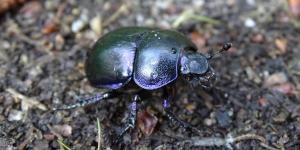
Beetle are insects and have six legs, as do all invertebrates in the class Insecta. Within this class can be found the order Coleoptera, commonly known as beetles. They are the largest order of all insects, being distinguished by a hard wing casing known as an elytron. Various types of beetles are known to...

We can use a beetle's anatomy to distinguish them from other insects. Of the order Coleoptera, there are approximately 400,000 recognized beetle species, with more yet to be discovered. Since they are insects, there are certain anatomical similarities which are shared by all of these invertebrates. An example...

Silkworms belong to the order Lepidoptera, but it is important to know they are not actually worms. They are moths, but are most well known to us when they are in the larval stage. This is the stage during which they secrete proteins which harden into a filament that can be woven to form their pupae....

Cockroaches are often seen at night, scurrying away once we turn on a light. This doesn't mean we don't see them during the day, but cockroaches are mainly nocturnal animals. Belonging to the order Blattodea, the ancestors of these insects date back approximately 300 million years. Although they are mainly...

Flamingos in the wild live on every continent except Antarctica. This does not mean they can live in any environment since the natural habitat of flamingos needs to be in temperate and warm climates. Water is also a very important factor in determining where a flamingo can live since they gain their sustenance...

From the parched sands of the desert to the lush canopies of tropical rainforests, lizards have mastered the art of survival, adapting to a wide range of environments. This taxonomic diversity extends to their reproductive strategies, with lizards showcasing a remarkable array of adaptations that enable...

Flamingos, with their vibrant plumage and graceful elegance, are a familiar sight in many corners of the world. But beyond their captivating appearance lies a curious habit: standing on one leg. While it might seem like a quirky pose, this behavior has piqued the interest of scientists and birdwatchers...
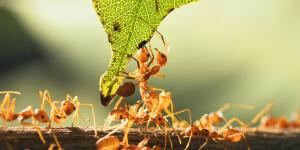
Effective communication is a cornerstone of survival in the animal kingdom. It fosters cooperation, alerts to impending threats, and maintains the integrity of social structures. From the intricate dances of bees to the haunting calls of whales, the diverse forms of communication showcase the remarkable...

Earthworm reproduction has allowed this native European species to have an almost global distribution. The earthworm (Lumbricus terrestris) is an annelid that is known to gardens as a beneficial animal. This is because they help to ensure soil is of a consistently high quality, largely due to their...

Ants, as industrious and social insects, play a crucial role in ecosystems worldwide. Their impact goes beyond natural habitats, influencing human activities. This article explores ant anatomy, shedding light on the mechanisms driving their behaviors, their roles within colonies, and their overall success...

Scavenger birds are a diverse group of birds that feed on carrion, or dead animals. They are important members of ecosystems, playing a vital role in nutrient cycling and disease control. Scavenger birds can be found in all parts of the world, from the tropics to the Arctic. They come in a variety of...

Journey into the depths of the ocean and discover the diverse and fascinating world of octopuses. These remarkable creatures possess a unique combination of beauty and power, with their mesmerizing patterns, intriguing adaptations, and potent venom that serves as a formidable defense mechanism.
Join...

Although ants do have hearts, they do not pump blood around their body. This is because ants do not have blood. They have a fluid known as hemolymph which carries out a similar function. There are around 14,000 known species of ants, although there are likely many more to be discovered. They have a global distribution...

Contrary to the conventional image of a centralized brain, ants possess a unique neurological arrangement that empowers them to perform complex tasks and coordinate seamlessly within their colonies. Their decentralized nervous system, sophisticated communication, and collective decision-making processes...
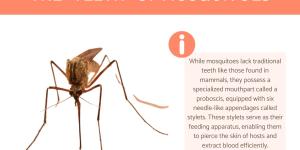
Teeth, in their various shapes and sizes, are nature's ingenious invention for processing food. They allow animals to tear, crush, and grind their meals, extracting vital nutrients for growth and energy. Mosquitoes, though lacking true teeth, possess a unique feeding apparatus that has evolved to serve...
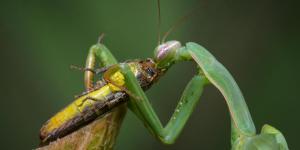
Praying mantises are some of the most fascinating and unique predators in the world. With their powerful front legs, camouflaged bodies, and lightning-fast reflexes, they are perfectly adapted to catching and eating a wide variety of prey. But what exactly do praying mantises eat, and how do they hunt?
In...

Cnidarians are a diverse group of aquatic animals that includes jellyfish, corals, sea anemones, and hydras. They are characterized by their radial symmetry, diploblastic body plan, gastrovascular cavity, and nematocysts. Cnidarians can be found in all marine habitats, from the shallowest coral reefs...

Have you ever wondered how birds see the world? It's quite different from how we see it. Birds have a number of unique adaptations that give them superior vision in many ways, and that allows them to see the world in all of its richness and complexity.
In this AnimalWised article, we will take an in-depth...
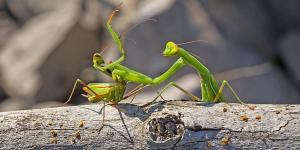
Picture a creature equipped with lightning-fast reflexes, razor-sharp claws, and an insatiable appetite. Meet the praying mantis, a captivating and formidable predator in the insect realm. Praying mantises are renowned for their intricate and distinctive reproductive process, including the intriguing phenomenon...

There are many surprising and often baffling behaviors in the animal kingdom, but one of the most notorious is the sexual cannibalism of the praying mantis. The image of a female praying mantis devouring her mate after or even during breeding is hard to ignore. But why does this seemingly self-destructive...
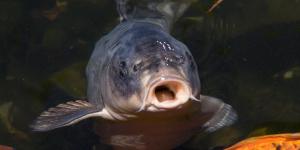
Beneath the serene ocean surface lies a world of intriguing secrets, and one of these mysteries revolves around the fish's tongue. Have you ever wondered if fish have tongues? Well, their tongues are not quite like ours. Fish, known for their remarkable diversity, also boast a wide array of feeding...
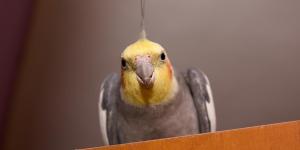
Cockatiels do recognize their owners thanks to their intelligence and sociability. Also known as weiros, the cockatiel (Nymphicus hollandicus) is a psittacine bird native to the Australian continent. Although wild populations thrive in their native habitats, they are kept as a popular companion animal...

Found in various regions across the globe, giant tortoises and turtles have managed to thrive in diverse environments, both on land and in the vast oceans. Their resilient nature and ability to adapt to different conditions have allowed them to become living relics of the past, embodying the essence of...

As with all insects, ants have six legs. They are an invertebrate from the order Hymenoptera, an order which also includes bees and wasps. Ants are grouped in the Formicidae family, a diverse group of insects with an almost global distribution. They are known to be eusocial, the highest level of sociability...

Embarking on epic journeys that span continents and defy geographical barriers, bird migration is a captivating natural phenomenon. With remarkable navigational skills and unwavering determination, millions of birds take to the skies each year, traversing vast distances in search of seasonal havens. From the...

Sparrows have a different lifespan in captivity than they do in the wild. There are two birds we know of as sparrows, Old World sparrows and New World Sparrows. They are from the families Passeridae and Passerellidae, respectively. Only Old World sparrows are known as true sparrows and it is these birds...

River turtles are various species of reptile within the order Testudines, the order to which all turtle species belong. What sets them apart is their habitat is specific to rivers, although there may be some individuals of a species who are not limited to rivers alone. They are still types of freshwater...
